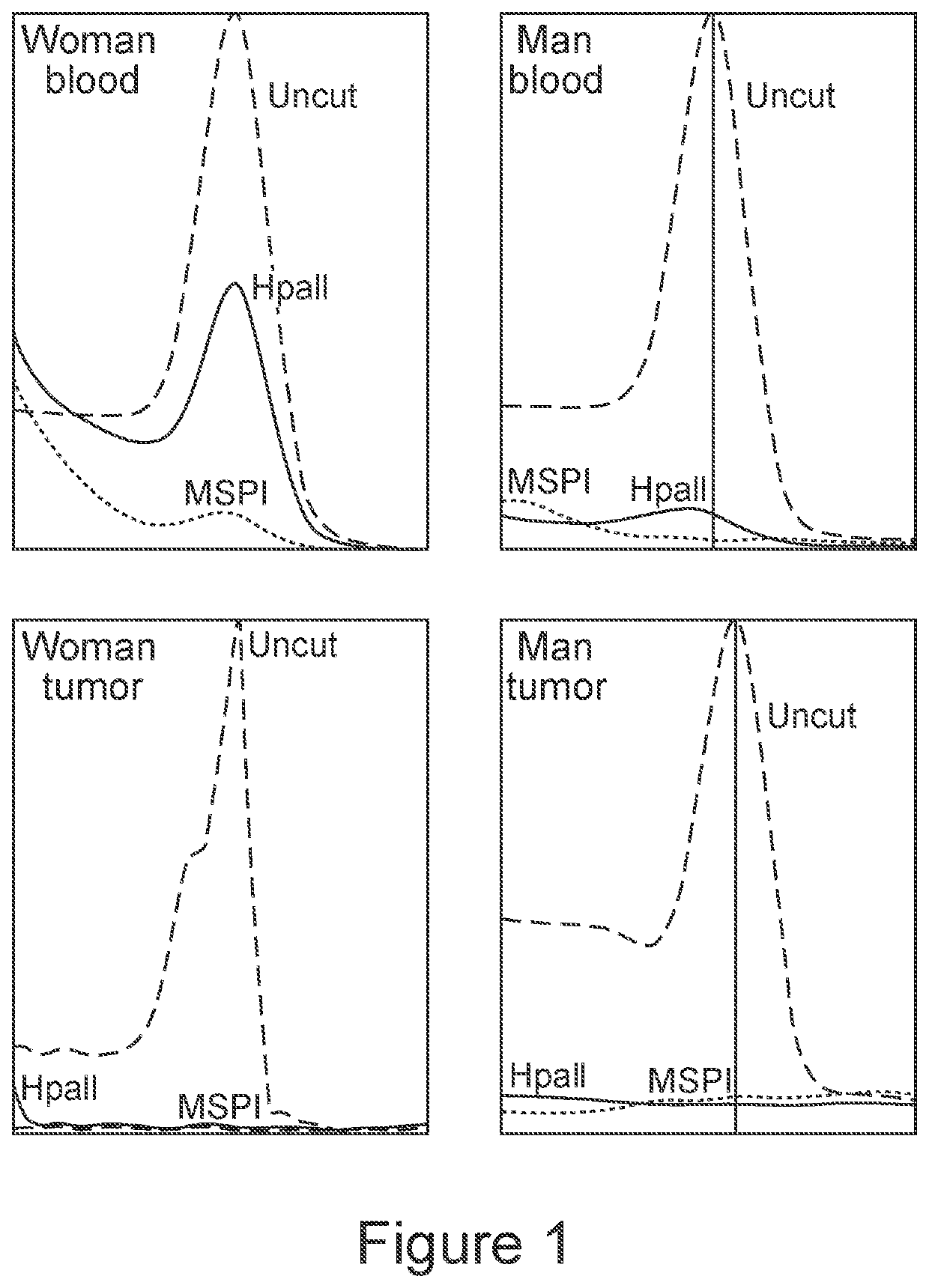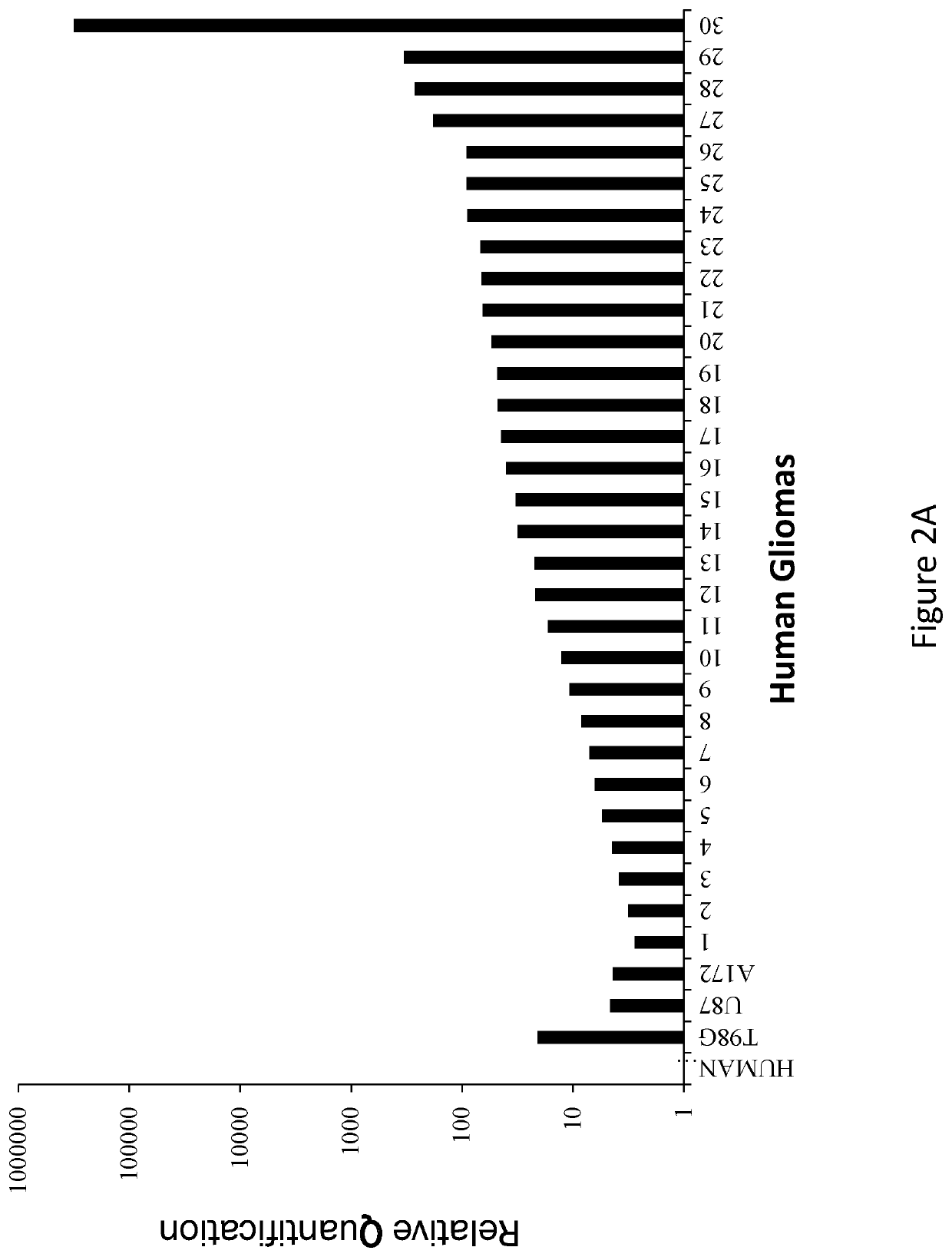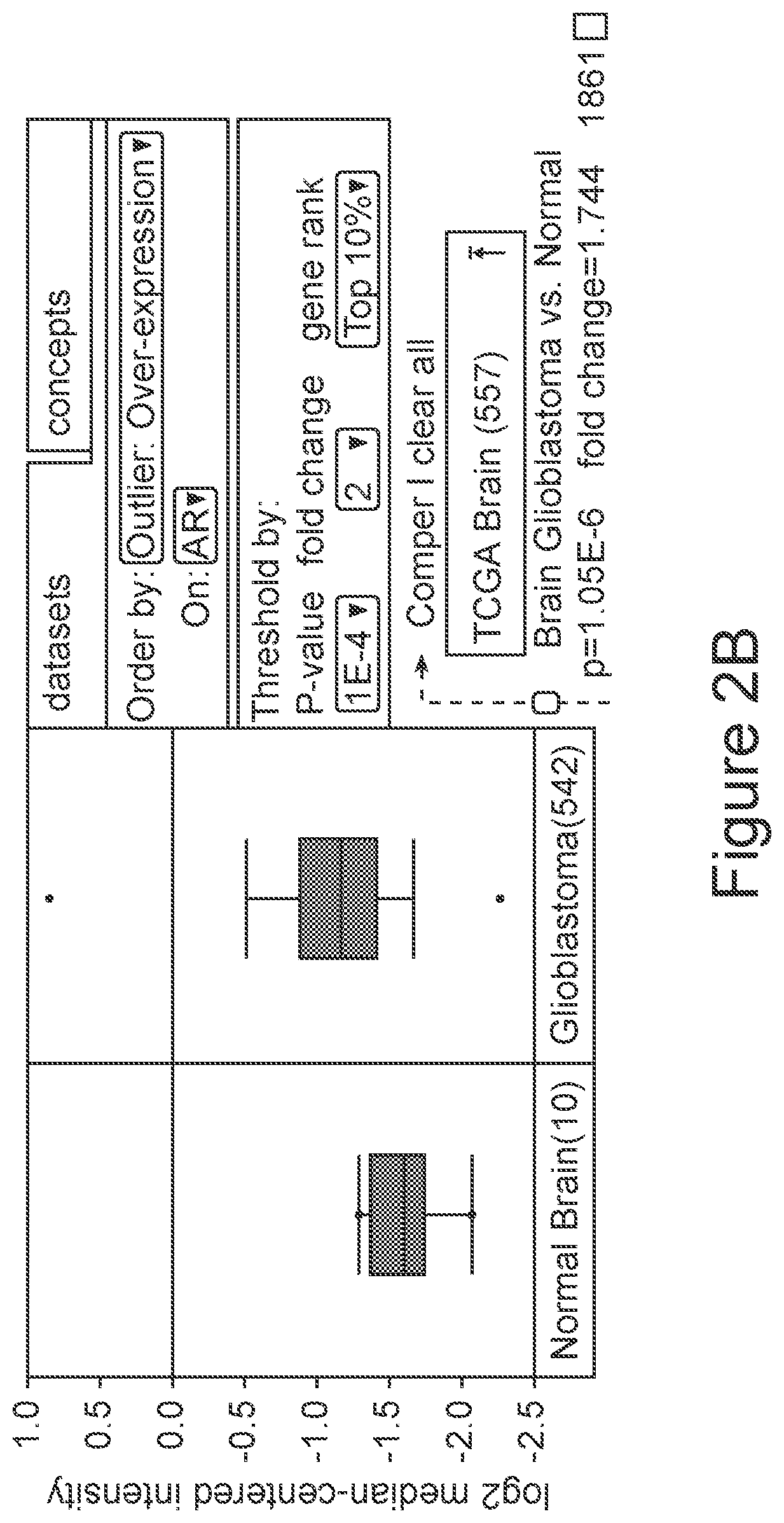Treatment for glioblastoma
a glioblastoma and treatment technology, applied in the field of cancer treatment, can solve the problems of difficult treatment of glioblastoma, limited brain repair capacity compared to other organs, and relatively susceptible normal brain cells to damag
- Summary
- Abstract
- Description
- Claims
- Application Information
AI Technical Summary
Benefits of technology
Problems solved by technology
Method used
Image
Examples
example 1
tion of AR DNA Locus Accompanied with Loss of Heterozygosity (LOH)
[0255]To elucidate unknown genetic changes in GBM that might lead to identification of new treatment candidates, a genome-wide copy number and loss of heterozygosity array (OncoScan FFPE Express, Affymetrix) was performed on DNA extracted from 5 formalin fixed paraffin embedded GBM samples of 5 women. In Addition to the known genetic aberrations, amplification of Androgen receptor (AR) region (Xq12) was revealed in 4 of the 5 samples; in three of these samples, amplification was accompanied by loss of heterozygosity (LOH) in the remaining allele. In one sample there was no change in the AR region.
example 2
e Inactivation Studies
[0256]Chromosome inactivation studies based on the differential methylation patterns of active and inactive alleles done on GBM samples from 35 women, revealed that the inactivated allele of this region was lost in 34 samples (FIG. 1). In the experiments described in FIG. 1, DNA samples (0.2 μg) were incubated for 2 Hr at 37° C. with 20 units of HpaII or MspI in a 20 μl reaction volume. The same amount of each DNA was incubated without enzyme in a sham reaction. Blood DNA was used as a control, as well as GBM and blood samples obtained from male subjects (indicated “man tumor” and “man blood”, respectively). This step was followed by 40 cycles of a real-time PCR reaction with primers flanking the CCGG restriction sites in AR gene. AR amplification is demonstrated as melt curve of the amplified amplicon. The amplification of the uncut DNA is compared to those restricted with HpaII / MspI as indicated in the graph. Samples
[0257]Focal copy-number-variation (CNV) ana...
example 3
sion in Gliomas
[0259]Quantitative real-time RT PCR (qPCR) and western blot analysis on RNA and protein (N=30 and 16, respectively) extracted from GBM specimens of men and women demonstrated a significant induction of AR RNA expression (2.76-315,984 induction fold) (FIG. 2A) and of AR protein expression (1.7-106 induction fold) (FIG. 3) in 93% and 87% respectively compared to non-tumor cells regardless of patient's sex (t-test; RNA analysis, p=0.37; protein analysis, p=0.691). FIG. 2A depicts Quantitative PCR (qPCR) analysis of AR mRNA expression following normalization to HPRT in 30 GBM tumor samples and 3 GBM cell lines (T98G, U87 and A172). A commercial RNA mixture of 23 normal brains (“HUMAN”) was used as a negative control.
[0260]The ONCOMINE™ research platform (Compendia Bioscience, Ann Arbor, Mich., Thermo Fisher Scientific Inc) was used to analyze AR RNA amplification from several databases. Analysis of the TCGA database demonstrated a 1.74 fold AR RNA induction in GBMs (n=542...
PUM
| Property | Measurement | Unit |
|---|---|---|
| volume | aaaaa | aaaaa |
| temperature | aaaaa | aaaaa |
| total volume | aaaaa | aaaaa |
Abstract
Description
Claims
Application Information
 Login to View More
Login to View More - R&D
- Intellectual Property
- Life Sciences
- Materials
- Tech Scout
- Unparalleled Data Quality
- Higher Quality Content
- 60% Fewer Hallucinations
Browse by: Latest US Patents, China's latest patents, Technical Efficacy Thesaurus, Application Domain, Technology Topic, Popular Technical Reports.
© 2025 PatSnap. All rights reserved.Legal|Privacy policy|Modern Slavery Act Transparency Statement|Sitemap|About US| Contact US: help@patsnap.com



